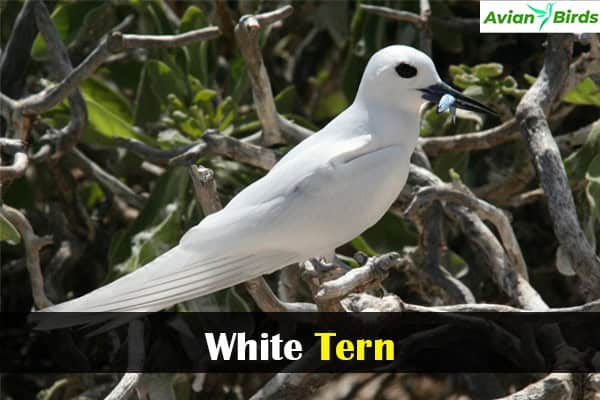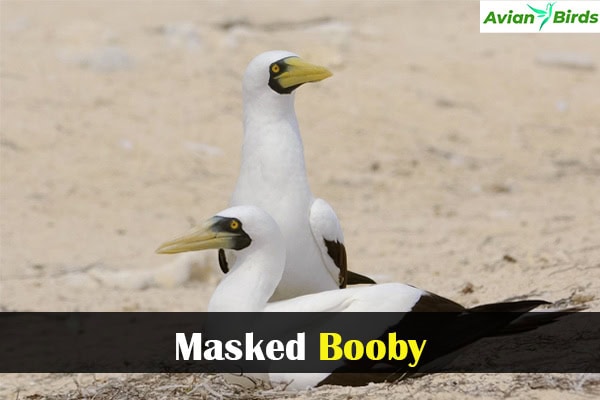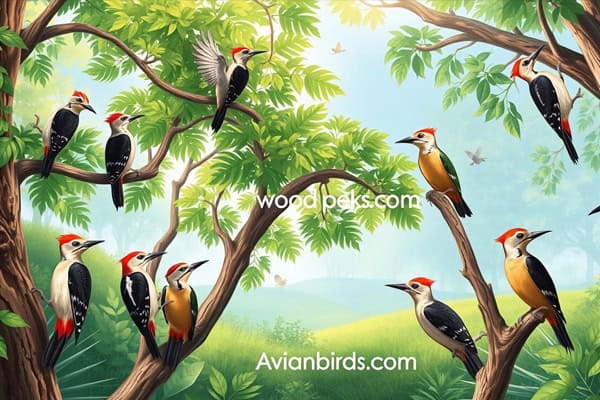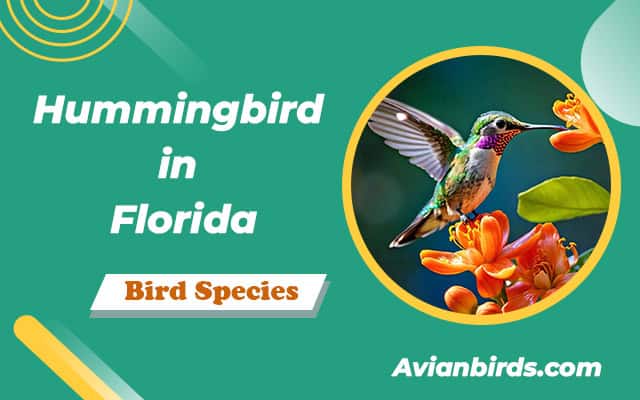7 Types of White Birds in Hawaii (ID Guide With Photos)
Did you know that about 30% of Hawaii’s bird species are unique to the islands? This makes birdwatching in Hawaii special, especially for the white birds. We’ll look at seven types of white birds, each with its own features and places to live.
We’ll use beautiful photos to help you see these birds up close. This guide aims to deepen your understanding of Hawaii’s bird species and their importance in the ecosystem. Let’s explore the world of Hawaii’s white birds together!
Common Characteristics of White Birds in Hawaii
White birds in Hawaii have special features that help them live in different places. These features make us see how important they are in their ecosystems. Their adaptations show how they manage to survive and thrive.
Physical Features and Adaptations
White birds in Hawaii often have light bodies that make flying easier. They have long wings, which let them fly over long distances without getting tired. Their white feathers not only look beautiful but also help them hide from predators or find a mate. These traits show how they’ve evolved to survive.
Behavioral Traits of Various White Birds
White birds also have interesting behaviors that show how they interact with their world. They use their sharp eyes and quick moves to hunt for food. During mating, they perform amazing aerial shows. Watching these behaviors teaches us about their roles in nature and how they keep their habitats balanced.
Notable White Birds in Hawaii
Our journey through Hawaii’s birdlife brings us to some of the most notable white birds. Each species has special traits and behaviors. They add to the richness of our avian biodiversity.
1. Cattle Egret
- Scientific Name: Bubulcus ibis
- Size: 46–56 cm (18–22 in)
- Weight: 300–500 g (10.6–17.6 oz)
- Lifespan: 5–10 years
- Diet: Insects, small mammals, and amphibians
The Cattle Egret was introduced to Hawaii in the 1950s. It quickly became a delightful addition to our landscape. With striking white plumage and long, slender legs, these birds are adaptable to the island’s environments.

They are often seen grazing beside livestock. These birds make for fascinating companions. They feed on insects stirred up by the animals they follow.
2. White Tern
- Scientific Name: Gygis alba
- Size: 28–32 cm (11–12.6 in)
- Weight: 100–150 g (3.5–5.3 oz)
- Lifespan: 10–15 years
- Diet: Fish, squid, and crustaceans
The White Tern, known locally as “Manu o Kū,” is a native Hawaiian bird. It is easily identifiable by its long tail and pure white feathers. This bird has a graceful demeanor and unique nesting habits.

It often finds its nests on branch ledges. Protecting these nesting sites is crucial for supporting their populations in our islands.
3. White-tailed Tropicbird
- Scientific Name: Phaethon lepturus
- Size: 76–81 cm (30–32 in)
- Weight: 500–700 g (1.1–1.5 lb)
- Lifespan: 10–20 years
- Diet: Fish and squid
The White-tailed Tropicbird is celebrated for its remarkable diving abilities. It has long, slender wings and striking white feathers. Observing this bird can reveal an impressive display of hunting prowess.

It plunges into the ocean to catch fish. This beautiful bird is commonly spotted along coastal cliffs. It captivates those lucky enough to witness its elegance in flight.
| Bird Species | Characteristics | Behavior |
|---|---|---|
| Cattle Egret | White plumage, long legs | Follows livestock, feeds on insects |
| White Tern | Delicate white plumage, long tail | Nests on branch ledges, graceful flyers |
| White-tailed Tropicbird | Long wings, slender body | Dives for fish, often seen along cliffs |
4. Arctic Tern
- Scientific Name: Sterna paradisaea
- Size: 28–38 cm (11–15 in)
- Weight: 80–120 g (2.8–4.2 oz)
- Lifespan: 20–30 years
- Diet: Fish and invertebrates
The Arctic Tern in Hawaii is known for its incredible journey. It travels thousands of miles every year. When these birds visit Hawaii, it shows their ability to adapt to different climates. Seeing an Arctic Tern is a special treat, highlighting their endurance and navigation skills.

5. Black-crowned Night Heron
- Scientific Name: Nycticorax nycticorax
- Size: 64–65 cm (25–26 in)
- Weight: 400–800 g (0.88–1.76 lb)
- Lifespan: 5–10 years
- Diet: Fish, amphibians, and insects
The Black-crowned Night Heron stands out with its striking looks and unique silhouette. It is often seen in wetlands. This bird is active at dusk or dawn, hunting fish and small creatures with stealth. It plays a key role in keeping Hawaii’s wetlands healthy.

6. Black-necked Stilt
- Scientific Name: Himantopus mexicanus
- Size: 33–36 cm (13–14 in)
- Weight: 200–400 g (7.1–14.1 oz)
- Lifespan: 10–20 years
- Diet: Insects, crustaceans, and small mollusks
The Hawaiian Black-necked Stilt is known for its long legs and elegant black neck. It thrives in wetland environments. By controlling insect populations, it helps maintain ecosystem health. Its presence shows a healthy habitat and the interconnectedness of our natural world.

7. Masked Booby
- Scientific Name: Sula dactylatra
- Size: 65–75 cm (25.6–29.5 in)
- Weight: 1.8–3.2 kg (4.0–7.1 lb)
- Lifespan: 15–20 years
- Diet: Fish and squid
The Masked Booby is a popular coastal bird in Hawaii, known for its bright colors and diving skills. It adds beauty to the shores and delights birdwatchers with its aerial displays. This bird is crucial to coastal ecosystems, feeding on fish and other marine life.

| Bird Species | Key Features | Habitat | Role in Ecosystem |
|---|---|---|---|
| Arctic Tern | Long migration, adaptability | Coastal areas during migration | Indicators of environmental health |
| Black-crowned Night Heron | Stealthy hunter, unique plumage | Wetlands | Controls fish populations |
| Hawaiian Black-necked Stilt | Long legs, black neck | Wetlands, shallow waters | Insect control, habitat indicator |
| Masked Booby | Bold plumage, diving ability | Coastal regions | Contributes to marine food web |
Conservation Efforts for Hawaii’s White Birds
Conservation efforts are key to saving white birds in Hawaii. Protecting their homes and habitats is crucial. Organizations work hard to keep these spaces safe from threats like development and invasive species. This helps ensure native birds have a safe place to breed and live.
Protecting Nesting Sites and Habitats
Keeping bird habitats safe is vital for Hawaii’s ecosystems. We focus on:
- Restoring native plants that feed and shelter the birds.
- Managing invasive species that harm the environment.
- Creating protected areas for breeding.
Community Involvement in Bird Conservation
Local communities play a big role in protecting Hawaii’s white birds. By teaching people about these birds, we encourage them to help. Community efforts include:
- Helping with citizen science projects to track bird numbers.
- Learning about habitat restoration in workshops.
- Supporting policies that protect wildlife.
Photographic Guide to White Birds in Hawaii
For those who love birdwatching, knowing the best tips can make our experience better. Visiting during early morning or late afternoon increases our chances of seeing white birds. Choosing places like coastal areas or wetlands helps us see more while respecting their homes.
Tips for Birdwatching in Hawaii
- Dress appropriately for varying weather conditions to stay comfortable.
- Bring binoculars to get a closer look without disturbing the birds.
- Maintain a respectful distance to minimize stress on the wildlife.
- Keep noise to a minimum to avoid spooking the birds.
Photographing Hawaii’s white birds requires skill and technique. Using the right camera settings helps a lot. A fast shutter speed and wide aperture are key for capturing birds in flight and a nice background.
Composition matters too. Following the rule of thirds makes photos more engaging. And, we must photograph birds ethically to protect them and their homes.
How to Capture Stunning Photos of Birds
- Set your camera to burst mode for capturing multiple images in quick succession.
- Use a telephoto lens to get closer without intruding on the birds’ space.
- Pay attention to the lighting; golden hours during sunrise and sunset provide softer, warmer light.
- Be patient and stay still; birds often come back to areas where they feel safe.
Where to Spot White Birds in Hawaii
Hawaii is a paradise for birdwatchers, with many beautiful places to see white birds. Finding the best spots makes it easier to enjoy these stunning creatures. We’ll explore top parks, wetlands, and coastal areas known for their rich bird life. Each spot offers unique chances to see different species and learn about their natural habitats.
Best Locations for Birdwatching Adventures
- Kaloko-Honokohau National Historical Park: This area features coastal wetlands and beach habitats, making it one of the best spots for white birds in Hawaii.
- Haleakalā National Park: The diverse ecosystems here attract different migratory species throughout the year, providing excellent birdwatching opportunities.
- Kealia Pond National Wildlife Refuge: Known for its large variety of waterfowl, this refuge is an ideal location for spotting seasonal bird patterns.
- James Campbell National Wildlife Refuge: This extensive wetland area is a prime spot for observing numerous white bird species.
Seasonal Variations in Bird Populations
Knowing when to go birdwatching is key for a great experience. The migration in Hawaii changes which white birds you can see at different times. Planning your trips based on these patterns can make your birdwatching more rewarding. For example, fall is a great time to see migratory birds moving through the islands.
Check Our Previous Articles:
Conclusion
Exploring white birds in Hawaii reveals a world full of diversity and beauty. From the elegant White Tern to the graceful Masked Booby, each bird adds something special to Hawaii’s ecosystem. This shows the rich bird culture that exists here.
Learning about these white birds also shows why we need to protect them. By saving their homes and supporting their well-being, we help ensure they’ll be around for future generations. This lets us all enjoy the beauty and sounds of nature.
Our work in birdwatching, conservation, and teaching can really help. By working together, we can protect Hawaii’s birds. This strengthens our bond with nature and helps us keep these precious birds safe for the future.







